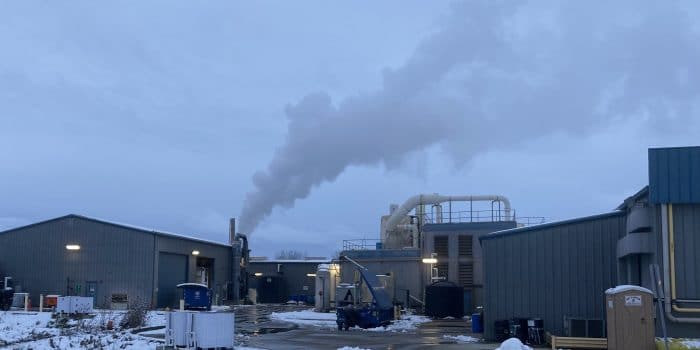Thanks to a novel substance produced by scientific cooperation led by an Oregon State University researcher, carbon dioxide from smokestacks can be captured and used to create commercially useful compounds. A press release issued by the university has divulged the details.
The study, which was published in the Journal of Materials Chemistry A, indicates that a novel metal-organic framework loaded with propylene oxide, a common industrial chemical, may accelerate the formation of cyclic carbonates while scrubbing CO2 from factory flue emissions.

One of the key causes of climate change is carbon dioxide, a greenhouse gas produced by the combustion of fossil fuels. Because cyclic carbonates are a class of compounds with a lot of industrial interest, the findings are good news for green-economy initiatives because they show that useful products like battery electrolytes and pharmaceutical precursors can be made from the same process that is used to clean emissions from factories.
The new lanthanide-based metal-organic framework, or MOF, can also be used to catalyze the creation of cyclic carbonate from biogas, a mixture of carbon dioxide, methane, and other gases produced by the decomposition of organic matter.
Lanthanides, a category of soft, silvery-white metals used in everything from night vision goggles to cigarette lighter flints, are catalysts that boost the rate of a chemical reaction without incurring any permanent chemical change. Cerium, europium, and gadolinium are examples of lanthanides.

A MOF is an inorganic-organic hybrid consisting of positively charged metal ions surrounded by organic “linker” molecules, in this case lanthanide metals and tetracarboxylate linkers, in a crystalline porous substance.
The metal ions form nodes that join the arms of the linkers to form a repeating structure that resembles a cage; the structure features Nano sized pores that absorb gases, much like a sponge. MOFs can be made up of a number of components, each of which influences the MOF’s characteristics.
“We’ve taken a big step toward solving a crucial challenge associated with the hoped-for circular carbon economy by developing an effective catalyst,” said lead researcher Kyriakos Stylianou of the Ohio State University College of Science. “A key to that is understanding the molecular interactions between the active sites in MOFs with potentially reactive molecules.”.


